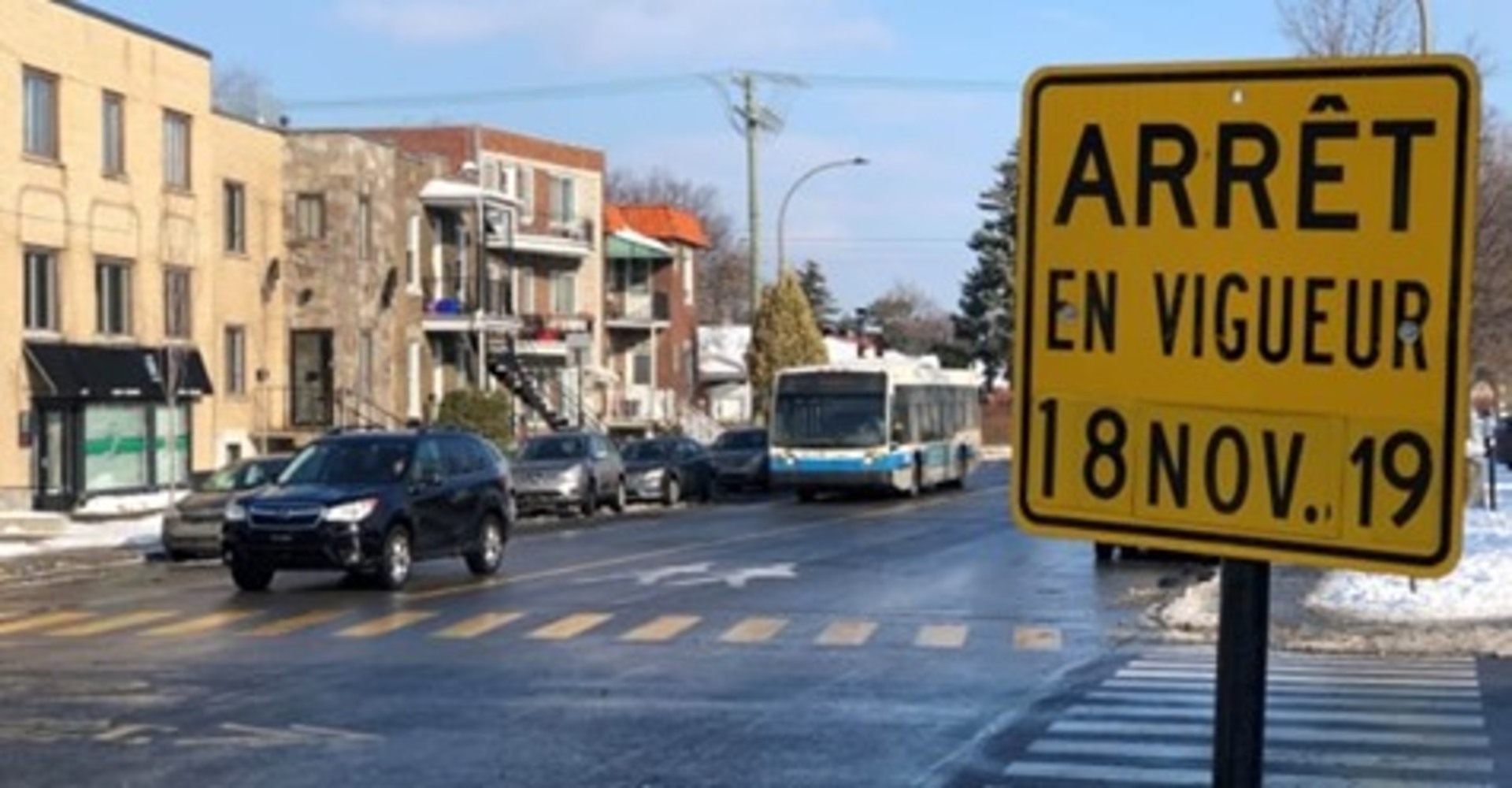Rosemont's pedestrian safety project: just add stop signs!
22 Nov 2019
Montreal's Rosemont—La Petite-Patrie borough has come up with a solution to drivers blasting through crosswalks: turn them into stop signs.
With the addition of stop signs at 17 more intersections on Monday, the borough has now made changes at 116 intersections since 2017.
"We're replacing 100 per cent of the pedestrian crossings that were not obeyed in the territory with stop signs," borough mayor François Croteau, a member of Projet Montréal, told Radio-Canada.
"Pedestrian crossings in Quebec give a false sense of security ... The stop forces motorists to have an extra level of attention."
Croteau noted that less than 20 per cent of children walk to school in Montreal.
"It's not for nothing," he said. "It's because parents are scared."
The borough began making changes three years ago, after noting that pedestrian crossings don't do enough to slow down motorists.
Next year, stops will be added to a further 75 intersections.
Intersections are the main sites of collisions and conflict among road users, according to a study published last year by Montreal's public health authority.
Rosemont—La Petite-Patrie officials say there have been no collisions between pedestrians and motorists at intersections where stop signs have been added.
But, since November 2017, three cyclists and four pedestrians have been killed in the borough in places that have not yet benefited from the new measures.
The borough said it has received only positive feedback.
"Citizens write to us almost daily to have new stop signs on the territory," said Croteau.
Two hours of observation
Radio-Canada recently spent two hours observing the intersection of St-Zotique Street and 42nd Avenue, where stop signs were installed two years ago.
Except for a few rare exceptions of motorists who went straight ahead without even slowing down, 80 per cent of the cars executed rolling stops — slowing down without stopping completely — including a police car.
Cyclists were least respectful of the signage. The vast majority did not stop; many did not even slow down.
Croteau said the borough has made the same observation, calling it "sad."
Not all corners will have signs
"It's not a systematic deployment, it's a targeted deployment," Croteau explained.
The initial goal was to secure pedestrian crossings in front of schools that weren't always respected when there was no crossing guard present.
The borough has since secured the perimeters of area parks with stop signs, speed bumps and narrowed intersections.
Then, Rosemont-La Petite-Patrie secured the crossings on bicycle paths along secondary streets that cross main arteries. And it added stop signs along commercial streets to improve pedestrian movement around local businesses.
